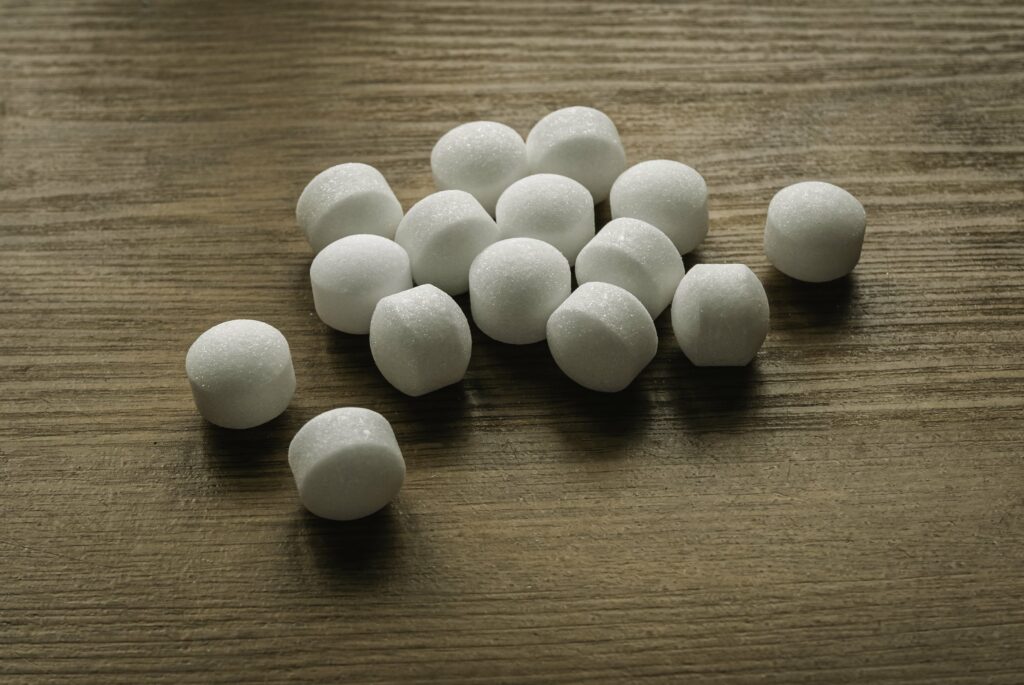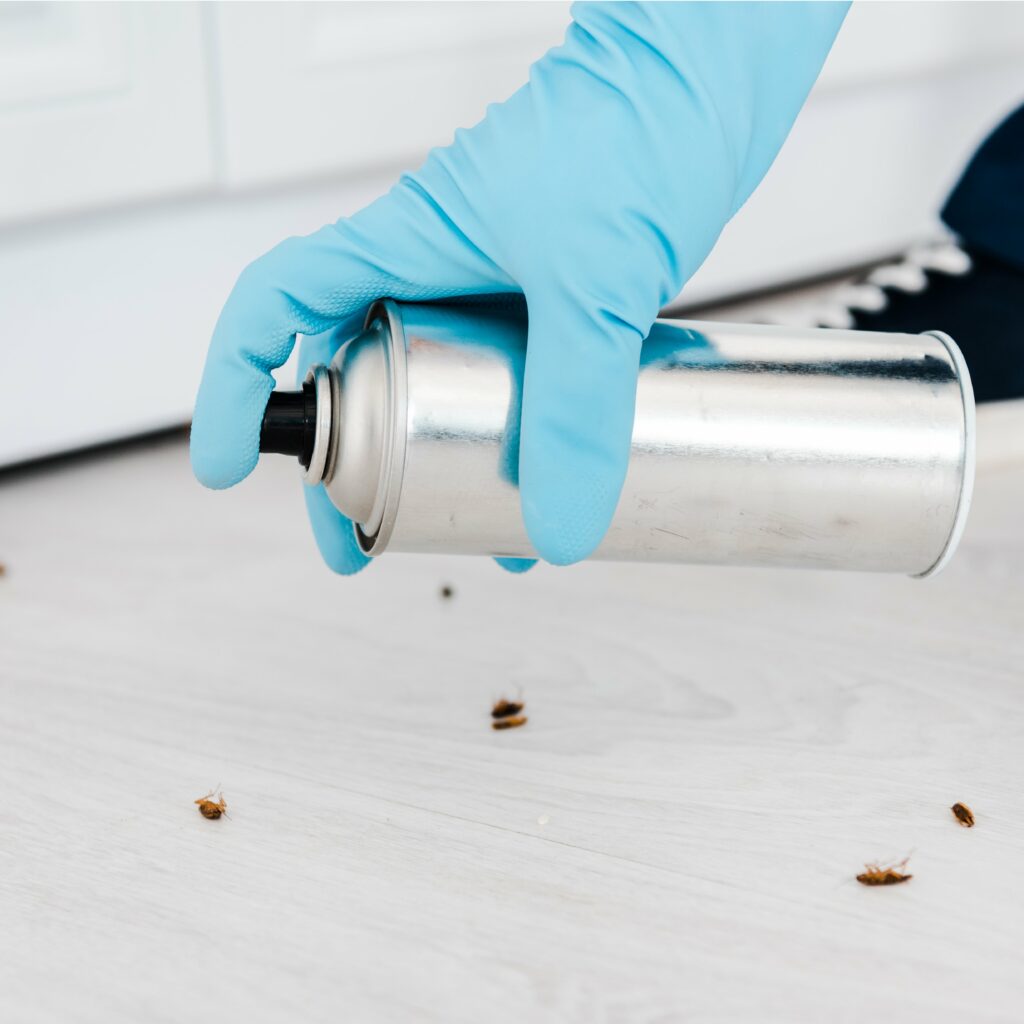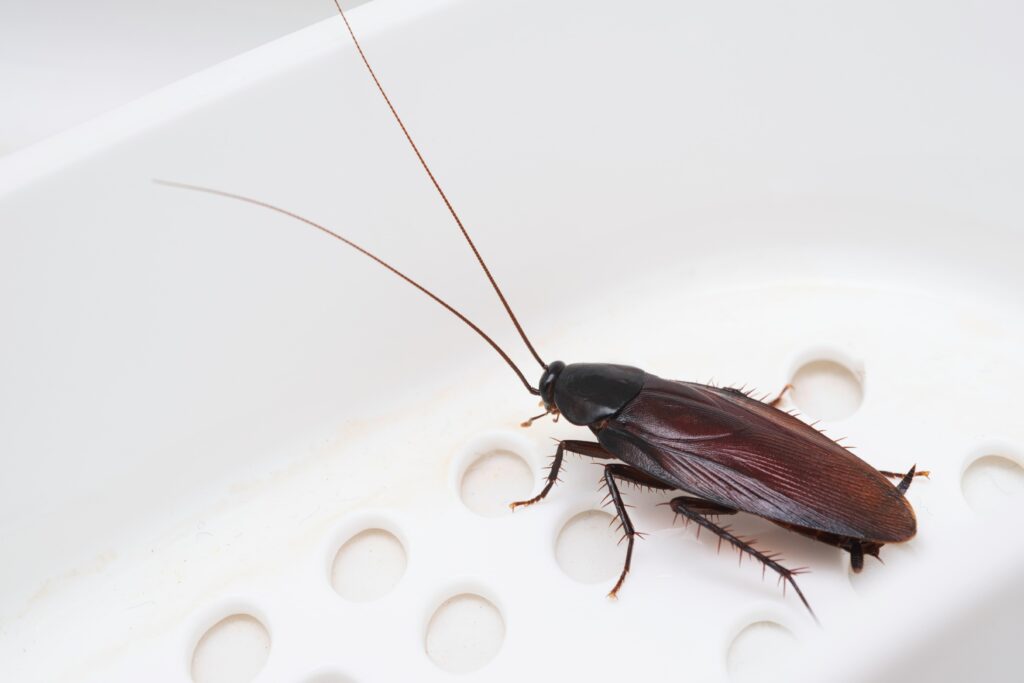Picture this: you open up your kitchen cabinets only to be met with an unwelcome sight – a scurrying roach. It’s a situation that sends shivers down most people’s spines.
Nobody wants these pesky insects infiltrating their homes, and the quest for effective roach repellents is an ongoing battle. In the search for solutions, some turn to mothballs – those small balls usually associated with wardrobes and keeping moths at bay.
But do they really repel the kill roaches? Let’s dive into the world of mothballs and their potential as a roach deterrent.
Uncover Roach Secrets! Learn the truth behind common myths with our guide on roach behavior and interactions with substances and food for a deeper understanding of these pests.
A brief explanation of mothballs and their common uses
Mothballs, as you may already know, are typically used to protect our beloved winter clothes, from pesky moths. They are made from either naphthalene or paradichlorobenzene, both of which have strong odor properties that insects find repulsive. These small balls work by releasing a gas that permeates fabrics and keeps destructive moths away.
While their primary purpose is to fend off moths, some people believe that mothballs can also discourage other bugs, including those notorious cockroaches. In addition to their use in wardrobes, mothballs have found themselves useful in various scenarios beyond clothes preservation.
Some people place them in storage containers or closets to deter insects from damaging stored belongings. Moreover, others even use them as mouse repellents in basements or attics.
Can mothballs repel roaches?

Now comes the million-dollar question: Can mothballs effectively repel cockroaches? It’s a topic that has sparked much debate among homeowners and pest control enthusiasts alike. On one hand, there are those who swear by the power of mothballs as an all-around insect repellent.
On the other hand, skeptics argue that roaches are a different species altogether and may not be affected by the same chemicals that deter moths and other insects. So, where does the truth lie?
Are mothballs a magical solution to keep roaches at bay, or is it merely wishful thinking? In this article, we’ll delve into the science behind mothballs and explore whether they truly have what it takes to repel those resilient pests.
We’ll evaluate the effectiveness of mothballs in killing roaches here, consider alternative methods for cockroach control, and discuss any potential risks associated with using mothballs in your battle against these unwanted house guests. Let’s find out if those little balls can indeed help you bid farewell to roach activity in your home for good.
Understanding Mothballs
The Science Behind Roach Repellents: Unraveling the Mystery of Mothballs
Mothballs, those tiny but powerful odor-emitting moth balls most often associated with protecting our favorite garments from fabric-devouring pests, have long been rumored to possess magical deterrent properties against a wide array of insects. But what exactly are mothballs made of, and how do they serve their purpose in repelling unwanted critters? Let’s delve into the fascinating world of mothballs and uncover their secrets!
Definition and Composition: Naphthalene or Paradichlorobenzene?
Mothballs typically come in small balls or flakes that emanate a pungent smell. The two primary chemical compounds used in mothballs are naphthalene and paradichlorobenzene. Naphthalene, a white crystalline substance derived from coal tar, has been traditionally employed in mothball production.
However, due to its potential health risks, paradichlorobenzene emerged as an alternative ingredient widely used today. Paradichlorobenzene is a colorless solid with a distinct sweet odor and is commonly employed as an insecticide for various pests.
Both naphthalene and paradichlorobenzene work by releasing toxic vapors that act as repellents against insects rather than killing them directly. These chemicals sublimate from solid form into gas when exposed to air, creating a noxious odor that purportedly drives away pesky bugs.
Purpose: Deterring Insects and Safeguarding Fabrics
While mothballs are primarily known for their role in preventing damage to fabrics caused by moths and other fabric-eating insects, their use extends beyond wardrobe protection. These potent-smelling orbs are designed to deter various types of insects from invading spaces where they are placed.
The odor produced by mothballs is intended to create an environment that pests such kill roaches would find inhospitable, thereby discouraging them from settling in the vicinity. Apart from repelling cockroaches, mothballs are also believed to deter other bugs that can be potential household nuisances.
However, it’s important to note that their effectiveness can vary depending on factors such as concentration, exposure time, and the specific pest species targeted. While mothballs can be a potential tool for pest control, it’s essential to weigh their pros and cons before utilizing them as a stand-alone solution.
So now that we understand what mothballs are made of and how they function as insect repellents let’s explore whether these small balls of pungent aroma truly have the power to keep roaches at bay. After all, finding effective methods for repelling cockroaches is a top priority for many households aiming to maintain a clean and pest-free living environment.
Cockroach Repellent Claims
Exploring the belief that mothballs can repel roaches effectively
Picture this: you’ve discovered a sneaky cockroach crawling around your kitchen cabinets. Panic sets in, and you start brainstorming ways to eradicate these resilient pests. Suddenly, you remember hearing about a supposed wonder remedy – mothballs!
You wonder, can these small balls be used to repel moths and also chase away those pesky roaches? Let’s dive into the world of cockroach repellent claims and explore whether mothballs live up to their reputation.
Unveiling the Common Misconceptions
When it comes to finding natural solutions for cockroach infestations, people often turn to home remedies and folk wisdom. One of the most prevalent misconceptions is that mothballs can effectively repel roaches.
Mothballs contain either naphthalene or paradichlorobenzene, chemicals known for their strong odors that are believed to deter insects. However, it’s important to dispel some common myths surrounding this claim.
Firstly, there is a misconception that simply scattering mothballs around your home will instantly ward off cockroaches. However, it’s crucial to understand that while certain compounds in mothballs may have some effect on insects like moths or beetles, they are not necessarily optimized for deterring stubborn roaches.
Secondly, some mistakenly believe that placing mothballs near food will protect it from infestation. In reality, not only do roaches have a knack for invading even the tiniest crevices where food is stored but relying solely on mothballs as a preventive measure would be wishful thinking.
Questioning Efficacy: Science vs Anecdotal Evidence
The primary concern when examining the efficacy of using mothballs as a cockroach repellent is the absence of scientific evidence supporting this claim. While anecdotal accounts may suggest that mothballs can keep cockroaches at bay, it’s important to approach such claims with a healthy dose of skepticism.
Scientific studies investigating the effectiveness of mothballs on roaches have yielded mixed results, with some showing minimal effect and others inconclusive. While certain compounds in mothballs might initially repel roaches due to their strong odor, it’s crucial to recognize that cockroaches are highly adaptable creatures.
Over time, roach populations can develop resistance to these odors or simply learn to tolerate them when attracted by plentiful food sources. Therefore, relying solely on mothballs may result in less effective control of a roach infestation compared to targeted approaches specifically designed for combating these resilient pests.
While the belief that mothballs can effectively repel roaches has gained popularity over time, it is essential to approach this claim with caution. Common misconceptions place mothballs can often lead people astray when seeking natural remedies for pest control.
While some compounds in mothballs might have a temporary effect on roach behavior or deter other insects like moths or beetles, their efficacy against cockroaches remains questionable due to their adaptability and resistance. To combat a roach infestation effectively, it is advisable to rely on proven methods and seek professional assistance if necessary.
The Science Behind Roach Repellents

Roach behavior: understanding what attracts or repels them
To comprehend the effectiveness of roach repellents like mothballs, it is crucial to delve into the behavior of these resilient household pests. Cockroaches are attracted to warm and moist environments, making kitchens and bathrooms their favorite hideouts. They are nocturnal creatures that scavenge for food and water during the night.
Furthermore, roaches emit pheromones that act as signals for other roaches in their community, indicating food sources or potential breeding grounds. Understanding these factors can help us grasp what repels them.
Chemical compounds in mothballs and their potential effects on roaches
Mothballs contain either naphthalene or paradichlorobenzene as their active ingredients. These chemicals evaporate slowly when exposed to air and release a pungent odor that can deter certain insects when detected in high concentrations. However, it’s important to note that they kill cockroaches which have a different biology compared to moths and other insects targeted by mothballs.
Although there is limited scientific evidence specifically focusing on the impact of mothballs on roach behavior, some studies suggest that cockroaches may not be significantly affected by the odor of mothballs alone. The chemical compounds in mothballs may not be potent enough to repel cockroaches effectively or alter their feeding patterns in a considerable manner.
Nevertheless, it’s essential to recognize that every species of cockroach may respond differently to various repellents, including those found in mothballs. Therefore, while some individuals might claim success with using mothballs as a deterrent against roaches, it cannot be considered a foolproof method for getting get rid of roaches’ infestations.
Understanding the science behind roach repellents helps shed light on whether or not mothballs can effectively repel cockroaches. While some chemical compounds in mothballs may have deterrent properties against certain insects, their efficacy in repelling roaches is uncertain.
Cockroaches possess unique biology and behavioral patterns that may render them less responsive to the odor of mothballs compared to other pests. It is crucial to consider alternative methods for effective roach control, such as maintaining a clean and dry environment, sealing cracks and crevices, and seeking professional assistance if necessary.
Evaluating the Effectiveness of Mothballs on Roaches
Unveiling the Mysteries of Mothballs
When it comes to combating a relentless roach infestation, many homeowners turn to mothballs in hopes of finding a quick, temporary solution. These small balls, typically made from either naphthalene or paradichlorobenzene, are primarily used to deter insects and protect fabrics. However, whether mothballs possess the power to repel roaches is a matter shrouded in both speculation and skepticism.
Research Findings: Unmasking Repellency or Lack Thereof
Several scientific studies have investigated the impact of mothballs on roach behavior, aiming to determine if these pungent balls live up to their reputation as effective roach repellents. Surprisingly, research findings have been inconsistent and often inconclusive.
Some studies suggest that high concentrations of naphthalene or paradichlorobenzene can indeed repel roaches for a short period. However, others report no significant repellent effect on these resilient pests.
While anecdotal evidence may support claims of mothball effectiveness against certain insects, it is essential to approach these findings with caution when dealing specifically with cockroach infestations. The complexity of roach behaviors and their ability to adapt make it difficult for a single method like using mothballs alone to combat an infestation effectively.
Factors Shaping Success Rates
To evaluate the efficacy of using mothballs as roach repellents within your household, several factors come into play. Concentration levels play a vital role; higher concentrations tend to exhibit greater potential repellency effects. Additionally, exposure time is crucial; short-term exposure might yield better results compared to long-term use.
However, it’s important not only to consider concentration and exposure time but also other elements like the size of the infestation, the proximity of food sources, and the overall cleanliness of your house. Roaches are attracted to food debris, moisture, and warmth.
Thus, relying solely on mothballs to repel cockroaches may not effectively address these underlying causes that contribute to roach activity. While some studies suggest that mothballs can repel roaches in certain scenarios, their effectiveness remains inconclusive.
To combat cockroach infestations successfully, it is advisable to adopt a comprehensive approach that includes various methods such as proper sanitation practices, sealing entry points, and utilizing proven roach control strategies such as boric acid or diatomaceous earth. Remember that addressing the root causes of an infestation ensures long-term success in eliminating these persistent household pests without relying solely on the mothball smell.
Alternative Methods for Cockroach Control

Natural remedies: exploring non-toxic options for repelling roaches
When it comes to deterring those pesky cockroaches, there are several natural remedies that can prove to be effective without resorting to harsh chemicals. One such remedy is the use of essential oils, which have long been celebrated for their aromatic properties and potential benefits in repelling insects.
Peppermint and lavender oils, in particular, have shown promise in keeping roaches at bay. These powerful scents are known to be displeasing to pests, including cockroaches, making them an excellent alternative to mothballs.
To utilize essential oils as a natural deterrent against roaches, simply mix a few drops of either peppermint or lavender oil with water in a spray bottle. Shake well and then spray the solution around areas where you suspect these unwanted visitors may be lurking.
Focus on potential entry points such as cracks in walls or gaps around windows and doors. The strong scent emitted by the oils should help discourage roaches from venturing further into your space.
Other natural deterrents like bay leaves, cucumber peels, or catnip

In addition to essential oils, there are other natural substances that can help keep cockroach infestations at bay. Bay leaves, for example, have long been touted as an effective repellent due to their pungent smell that roaches find highly unpleasant. Simply place a handful of dried bay leaves near common access points for these pests—such as kitchen cabinets or pantry shelves—and let their fragrance work its magic.
Cucumber peels offer another easy and eco-friendly solution for affecting moths and deterring roaches naturally. The enzymes present in cucumber release a scent that repels not only moths but also cockroaches.
Place cucumber peels near areas prone to infestation (under sinks or behind appliances) to keep these unwanted guests away. Believe it or not, catnip, a herb well-known for its effects on feline companions, can also be a powerful roach repellent.
Studies have shown that the active ingredient in catnip, called nepetalactone, acts as a natural deterrent for cockroaches. So, if you have some dried or fresh catnip handy, sprinkle it around cockroach-prone areas for an aromatic and effective defense against these unwelcome pests.
By using natural remedies such as essential oils, bay leaves, cucumber peels, or catnip, you can take proactive steps to reduce the risk of cockroach infestations while avoiding the potentially harmful effects associated with chemical-based solutions. These alternatives will not only provide relief from the relentless presence of roaches but also leave your space smelling fresh and pleasant.
In our next post on cockroach control methods, we’ll explore additional strategies to combat these resilient creatures naturally. Stay tuned!
Potential Risks and Concerns with Mothball Usage
Health Hazards Associated with Prolonged Exposure to Naphthalene or Paradichlorobenzene

When it comes to using mothballs as a pest control method, it is crucial to be aware of the potential health hazards associated with their usage. Mothballs contain either naphthalene or paradichlorobenzene, both of which are chemicals known for their strong odor and insect-repellent properties.
However, prolonged exposure to these substances can have adverse effects on human health. Naphthalene, in particular, has been linked to several health concerns.
When inhaled or absorbed through the skin, this chemical can lead to symptoms such as nausea, headache, dizziness, and even damage to red blood cells. In severe cases, it may cause liver and kidney damage.
Similarly, paradichlorobenzene can also cause respiratory problems and skin irritation if used in excessive amounts or in poorly ventilated areas. To minimize the risks associated with mothballs’ chemical contents, it is essential to follow proper handling instructions provided by the manufacturers.
This includes using them strictly as directed and ensuring adequate ventilation when placing them in enclosed spaces. Additionally, it is advisable to keep mothballs away from children and pets who might mistakenly ingest them.
Environmental Impact of Using Mothballs as a Pest Control Method
While mothballs may offer some efficacy against moths and other fabric-damaging insects when used correctly within suitable environments (such as closets), their impact on the environment should not be overlooked. When used as a general pest control method for repelling cockroaches or other household pests beyond their intended purpose of protecting fabrics, they raise environmental concerns. One major issue lies in the fact that mothball chemicals do not readily break down or degrade once released into the environment.
When mothballs are discarded or exposure to moisture occurs, these chemicals can seep into soil, water sources, and air, posing risks to wildlife and ecosystems. Additionally, when mothball containers are incorrectly disposed of or left exposed in outdoor areas, unsuspecting animals may mistake them for food or come into contact with the chemicals directly.
To mitigate the environmental impact of pest control measures involving mothballs, it is advisable to explore alternative methods that are more environmentally friendly. Natural remedies like diatomaceous earth or boric acid can be effective against cockroach infestations without causing harm to the environment.
Additionally, implementing good sanitation practices such as keeping food storage and preparation areas clean can go a long way in reducing roach activity naturally. While mothballs may have some efficacy in repelling certain insects when used as intended for protecting fabrics from moths, their usage as a general pest control measure raises concerns about both human health and the environment.
Awareness of the potential health hazards associated with prolonged exposure to naphthalene or paradichlorobenzene is crucial to ensure proper handling and use. Moreover, considering alternative methods that are less harmful to both humans and the environment can provide effective solutions for dealing with pesky household pests like cockroaches while minimizing potential risks.
Recap of Do mothballs repel roaches?
Throughout this article, we have delved into the captivating topic of whether mothballs can effectively repel roaches. As we explored the science behind roach behavior and the chemical composition of mothballs, it became evident that while there may be claims about their repellent properties, scientific evidence suggests otherwise. Research findings have indicated that mothballs are relatively ineffective in deterring roaches.
While they contain chemical compounds like naphthalene or paradichlorobenzene that might repel certain insects, roaches seem largely unaffected by these substances. Factors such as concentration, exposure time, and the specific behavior of individual cockroach species all contribute to the overall ineffectiveness of mothballs as a robust solution for cockroach infestations.
But fear not! If you’re dealing with pesky insects like cockroaches and seeking alternative methods for control, there are various natural remedies to try.
Essential oils such as peppermint or lavender have shown promise in repelling roaches without resorting to toxic fumes. Additionally, items commonly found around your house—like baking soda or bay leaves—can be strategically placed in dark spaces to deter these unwanted guests from taking up residence.
So while it may be disappointing to learn that mothballs won’t miraculously solve your cockroach problems, take heart in knowing that there are effective alternatives available. By implementing these natural remedies and maintaining proper cleanliness in your home—especially in food prep areas—you can greatly reduce the likelihood of a cockroach infestation.
Remember to wear gloves and prioritize safety when using any pest control methods. Always wear protective eyewear and gloves if necessary, and be cautious when handling substances like essential oils or other deterrents.
With a proactive approach and an arsenal of knowledge at your disposal, you can confidently tackle any pest-related challenges that come your way. Rest assured, with the right strategies, you can get rid of cockroaches and keep your home free from these unwelcome visitors.
Experience cockroach elimination with D-Termination: Las Vegas’ leading pest control service!

Are you dealing with cockroach problems? D-Termination is here to provide assistance. Our expert team specializes in eradicating cockroach infestations, restoring hygiene, and ensuring peace of mind. Say goodbye to cockroaches and opt for D-Termination’s effective pest control today!
To book your cockroach control service and reclaim your space from these resilient pests, contact us at 702-919-6310 or visit dtermination.com.
Frequently Asked Questions:
A clean and well-maintained environment can help keep roaches away permanently.
Roaches are repelled by scents like peppermint, lavender, and citrus.
The best roach repellent is often considered to be a combination of boric acid and sugar baits.
You can use peppermint oil, vinegar, or boric acid as natural repellents to push roaches away from your house.







